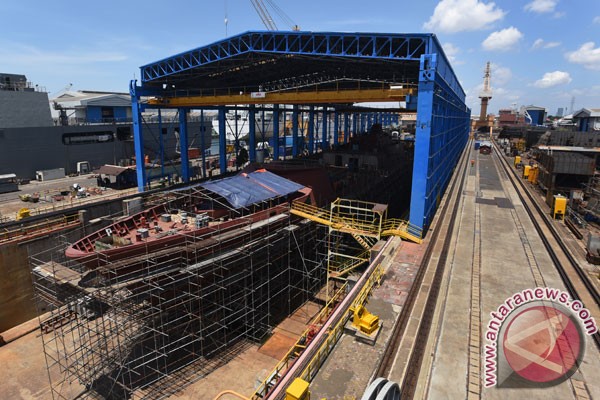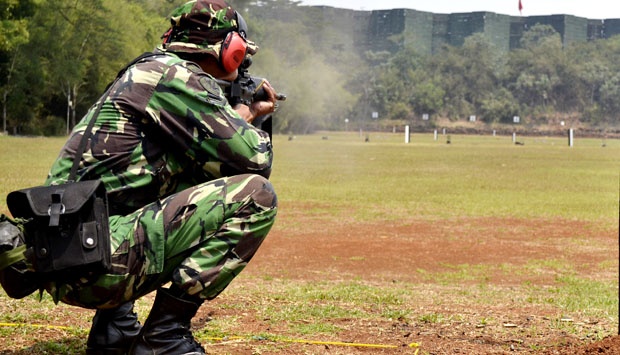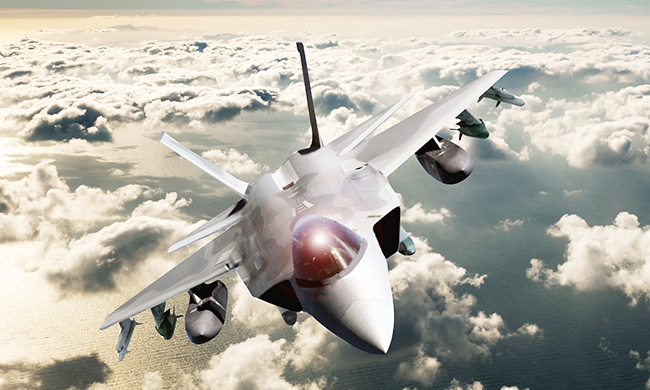Regarding the Fighter jet JV is that just MOU or is it a project that is currently U/D?
The KFX/IFX project already kick off and under development by Korean Aerospace Industries & PT. Dirgantara Indonesia at this moment, however the negotiation process was not easy and meet many obstacle specialy when the U.S. government refused to honor Lockheed Martin's pledge to transfer four core technologies in return for sales of 40 F-35 stealth fighters to South Korea, posing a threat to the nation's project to develop its own fighter jets.
Korea starts KF-X fighter development
An artist's concept of KF-X fighter
6 prototypes will be produced by 2021
Korea officially kicked off a project to develop indigenous high-tech fighter jets, Thursday, with the goal of producing six prototypes by 2021 and completing development by 2026.
Officials from all entities involved held their first meeting at the headquarters of Korea Aerospace Industries (KAI), the main contractor, in Sacheon, South Gyeongsang Province.
They are the Defense Acquisition Program Administration (DAPA), the U.S. defense giant Lockheed Martin, the Indonesian Defense Ministry and Indonesia's state-run defense firm PT Dirgantara Indonesia (PTDI).
The government plans to spend 8.5 trillion won in the development of the KF-X, and an additional 10 trillion won to produce 120 jets by 2032 to replace the Air Force's aging fleet of F-4s and F-5s.
DAPA said the nation will domestically develop some 90 items necessary for the aircraft, including the active electronically scanned array (AESA) radar, and electronic optics targeting pod (EOTGP), which the U.S. government earlier refused to hand over to Korea for security reasons.
"Our goal is to localize 65 percent of the components for the aircraft," DAPA said in a release.
The project will also proceed with the help of Lockheed Martin which will transfer 21 technologies used in the F-35 stealth fighter. In early December, the U.S. government approved the transfer of the technologies in a "large frame," according to DAPA.
For its part, the Indonesian government will invest some 1.6 trillion won in the project, and its defense firm will participate in the process of design and component production. The country will also be given one prototype and technology data afterward.
But concerns still remain over the possibility that the U.S. might once again refuse to approve the handover of some of the technologies requested by Seoul, as negotiations between DAPA and Lockheed officials are still ongoing to list the details, as hundreds of technical items are part of them.
DAPA head Chang Myoung-jin said earlier that negotiations will continue for the next two to three years.
In addition, some critics are still skeptical about whether the nation will be able to domestically develop the AESA radar and other integral technologies by the target deadline.
As part of efforts to manage such risks involving the multi-million-dollar project, the National Assembly established a subcommittee comprised of professors and experts in the aerospace field to consistently monitor the costs and schedule of the development process, according to DAPA.
It said in a release, "We will dispatch professional manpower comprised of DAPA and Air Force officials to KAI headquarters from the end of this month in an effort to maximize oversight."
KAI President and CEO Ha Sung-yong said, "We will concentrate all our capacity to succeed in the KF-X project and contribute to the nation's economy."
Before its official kickoff, the program had suffered a severe crisis after the U.S. government refused in April to allow Lockheed to hand over four core technologies — the AESA radar, the EOTGP, the infrared search and radio frequency (RF) jammer and the infrared search and tracking (IRST) system.
A transfer of a total of 25 technologies was included in an offset deal signed in September of 2014 with Lockheed Martin in return for Korea's purchase of 40 F-35s.
Amid growing skepticism about the feasibility of the KF-X program at the time, DAPA said that the nation could domestically develop them and the U.S. government had promised to approve the transfer of the other 21 technologies.
http://www.koreatimes.co.kr/www/news/nation/2016/01/116_196052.html





































